Fallen Angel (1945)
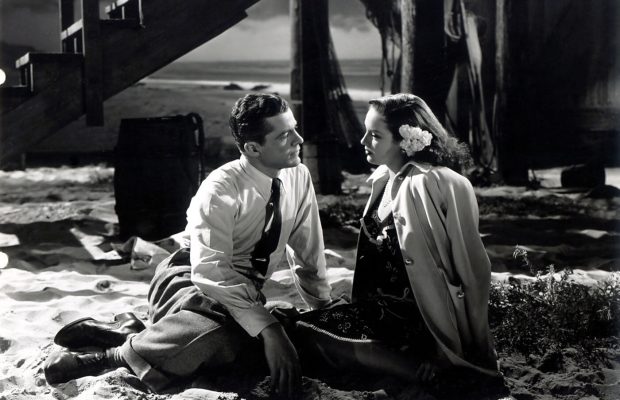
Toronto Film Society presented Fallen Angel (1945) on Monday, July 29, 2019 in a double bill with Force of Evil as part of the Season 72 Summer Series, Programme 4.
Production Company: 20th Century-Fox. Director: Otto Preminger. Producer: Otto Preminger. Screenplay: Harry Kleiner, based on the novel by Marty Holland. Cinematography: Joseph LaShelle. Editor: Harry Reynolds. Music: David Raksin. Art Direction: Lyle Wheeler, Leland Fuller. Set Decoration: Thomas Little, Helen Hansard. Costumes: Bonnie Cashin. Release Date: November 7, 1945.
Cast: Alice Faye (June Mills), Dana Andrews (Eric Stanton), Linda Darnell (Stella), Charles Bickford (Mark Judd), Anne Revere (Clara Mills), Bruce Cabot (Dave Atkins), John Carradine (Professor Madley), Percy Kilbride (Pop).
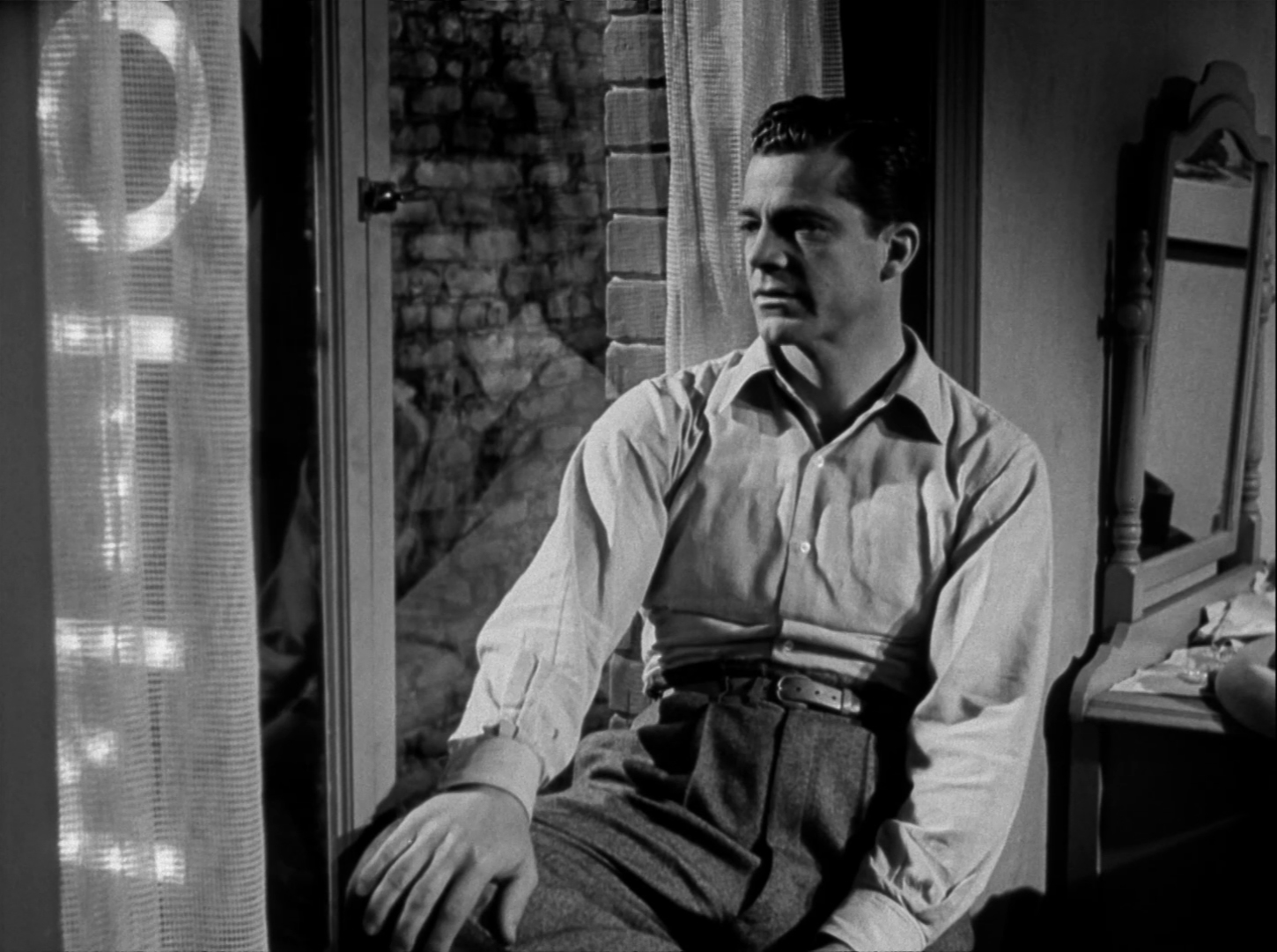
Here’s what Otto Preminger had to say about his film to TFS founder Gerald Pratley: “As for Fallen Angel, I can’t even tell you the story of it. …I was dressing for dinner and Fallen Angel was on television. I watched it and I got quite involved; then my wife finished dressing and I never saw the ending. I still cannot recall the ending! It was an interesting film.” Writer Foster Hirsch finished this off by saying, “…the ending seems manufactured. It’s no wonder that Preminger could never remember how the film ended.”
And so, the ending was, due to the objections made by the Production Code Administration and the Office of War Information, both of which bombarded Fox with objections over the script. And so, the ending was revised.
Although Darryl Zanuck and Preminger had to convince Alice Faye to accept this role, it was noted that Zanuck was first considering borrowing Olivia de Havilland from Warners to play June Mills.
Zanuck was legendary for also controlling his studio’s films through editing. Screenwriter Walter Reisch recalled that once the director submitted his first cut to head office containing everything that had been shot, Zanuck took over as editor. He didn’t edit with subtlety or patience, a little frame taken from here or added to there; he took out whole sequences. And although you can hear composer David Raksin’s song “Slowly”, Stella’s favourite song throughout the film, that’s how Faye’s rendition was removed. Alice Faye felt Zanuck cut out her best scenes and moments.
Although Faye called Preminger very tough to work for and didn’t care what he said or how he hurt a person, she felt he got a lot out of her and she was proud of her performance. Linda Darnell, on the other hand, didn’t get along with the director and although she was not one to dislike many people, she couldn’t tolerate Preminger and his meanness towards her. Interestingly, she went on to make three other pictures with Preminger and there’s an anecdote that Joseph L. Mankiewicz used a framed portrait of Preminger to elicit an appropriate reaction of distaste from Darnell in a particular scene from their film A Letter to Three Wives.
Dana Andrews’ take on Preminger’s reputation for ill temper was Otto’s impatience with inefficiency. He felt he shouldn’t have to teach an actor how to act and would go into tirades when he judged an actor to not be up to snuff.
Linda took lengths to prepare for her role as a waitress including working at the studio’s coffee shop. Actress Celeste Holm’s, who was also employed at Fox at this time, observed that Darnell, who had a lifelong battle with alcohol, was drinking on the set to either prevent or defend herself against an Otto tirade, but she was helpless again Preminger’s tyrannical behavior towards her.
This little piece of information will give us a further glimpse into the psyche of the director. In 1945, Otto Preminger stated that to adapt Marty Holland’s novel (a pseudonym for the author Mary Holland and whose story Fox bought a year before it’s 1945 publication), he hired Harry Kleiner, a student of his at Yale in 1939. “Not one of my pupils succeeded. This irked me, so I looked up Harry Kleiner, one of my best pupils, when I was in New York last year for the opening of Laura. I read a play he was working on, liked it, and brought him to Hollywood to do the script. His work on Fallen Angel vindicated me as a teacher.” So, it seems, it was all about him. As always, Preminger worked closely with the writer, supervising every line, and by the time the script was finished and ready to go into production he had committed it to memory. Kleiner wrote the screenplay for Preminger’s Carmen Jones, so he must have had a decent experience with the director—or he was in need of a paycheque.
Sources: The Cinema of Otto Preminger by Gerald Pratley (1971), The Man Who Would Be King by Foster Hirsch (2007) and The World and Its Double: The Life and Work of Otto Preminger by Chris Fujiwara (2008)
Introduction by Caren Feldman
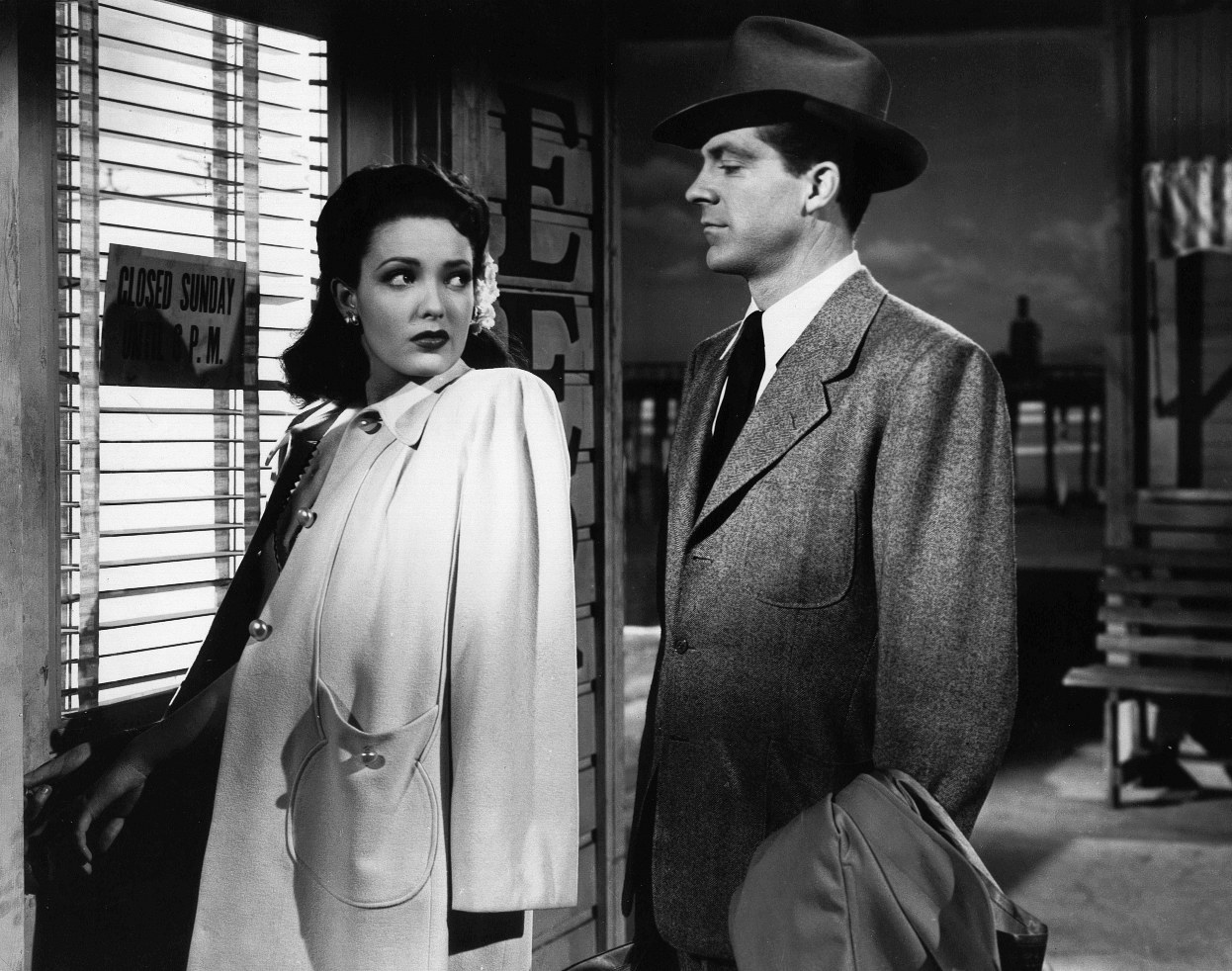
Two years after Linda Darnell appeared—unbilled—as The Virgin Mary in The Song of Bernadette (1943), she hit her stride as an actress in a pair of films noir: as the victim of Laird Cregar’s homicidal composer in John Brahm’s gaslit-era Hangover Square (1945) and as the hash-house waitress dreaming of better things in Otto Preminger’s Fallen Angel (1945). It wasn’t that Darnell (1923-1965) had gone unnoticed. Fleeing an unhappy family life in her native Dallas, she arrived in Hollywood underage in 1939 and quickly found work. Four co-starring roles opposite Tyrone Power—in Day-Time Wife (1939); Brigham Young (1940); The Mark of Zorro (1940); and Blood and Sand (1941)—put her on the Hollywood map and on studio boss Darryl F. Zanuck’s to-do list at 20th Century-Fox. Darnell, realizing she would have a limited shelf life portraying sweet young things in costume dramas, wanted meatier roles. She got one by way of Summer Storm (1944), Douglas Sirk’s adaptation of the Chekhov novel “The Shooting Party”. As a lusty Russian peasant girl who devours George Sanders’ aristocrat, marketed with copious publicity shots showing Darnell posing in a hayloft in a peasant blouse and little else, she became one of World War II’s most popular pin-up girls. Zanuck, sensing the money to be made from her dark voluptuousness and smoldering sensuality, elevated her to Fox’s first rank of femmes fatales. Enter Otto Preminger. Preminger’s reward for filming the noir hit Laura (1944) was to be ordered by Zanuck to do it again. Being asked to repeat himself was met with muted enthusiasm by Preminger, but he set to work, taking advantage of one of the studio system’s plusses—the ability to quickly and efficiently re-assemble a production team whose collaboration had proved fruitful. Thus Preminger re-enlisted cinematographer Joseph LaShelle; composer David Raksin; art directors Lyle Wheeler and Leland Fuller; costume designer Bonnie Cashin; second unit director Tom Dudley; and three other team members, ensuring that behind the camera all would be working from the same page.
The loose cannon was Zanuck, or rather the ongoing war between Zanuck and the film’s top-billed star, Alice Faye. A decade-long string of musicals had turned her into one of Fox’s most bankable stars. She had amassed enough clout that Zanuck had to keep her happy. Faye, like Darnell, wanted a change of pace; a chance to prove she had dramatic chops. She also had, in effect, script approval. A studio press release said that she had turned down 35 scripts before settling on Fallen Angel; presumably, with an eye to Laura. Exercising her right to choose her leading man, she chose Laura star Dana Andrews. Also mindful of David Raksin’s hit song (and theme) from that film, she insisted he write her a song, too. He showed up with several. She chose one called “Slowly”. Faye might have naively chosen the role of June Mills because she was so saintly, not realizing the character would come across as slightly insipid.
In Laura, Dana Andrews played a cop. In Fallen Angel, he plays Eric Stanton, a glib drifter, thrown off a bus in a California coastal town because he’s literally down to his last dollar. Conning himself into a hotel room, he walks into a shack-like diner, where Darnell has already wrapped around her little finger: the owner (Percy Kilbride in slavish, scrawny, hayseed mode); the guy who services the jukebox (Bruce Cabot in experienced commercial traveler mode); and the local cop (Charles Bickford, stonily playing out his police career after years in New York). Stanton, too, falls under her brassy spell. She reciprocates his interest, but she’s been bruised enough by experience to know she’s only got so many years left to find a snug harbour. She can’t afford another deadbeat, she tells him frankly. After briefly hooking up with John Carradine’s engagingly-breezy phony mind-reader, he targets Faye’s spinster daughter and heiress (with her suspicious sister, also a spinster) and romances her, scheming to separate her from her money so he can run off with Darnell’s pouty, sometime waspish, but oh-so-luscious Stella.
Faye’s June is the church organist. (The church seems an airless sepulcher, reinforcing the cloud of genteel suffocation hanging over the sisters like a shroud.) This woman, too, is on the wrong side of the biological time clock. For a woman with a lifelong interest in classical music, June harbours a credibility-demolishing degree of naiveté. It may be attributed to her interest in the fast-talking stranger—who approaches her during a solo practice in church and compliments her on her way with Beethoven, Brahms, and Bach—that she lets pass the obvious fact that his knowledge of music is nonexistent. Later, when he wants to lure her to San Francisco to get her money from a safe deposit box in a bank there, he offers to take her to hear Arturo Toscanini conduct the San Francisco Symphony (he never did) and later get Toscanini to listen to her musicianship. All the while, Darnell’s Stella is cooling her heels (or not) in her shanty-like backstairs room that would be on the wrong side of the tracks if the town had tracks. What’s wrong here is obvious: Faye’s character is a cardboard cutout of goodness, patience, forbearance, and love; refusing to entertain the idea that there’s anything questionable about the churlish man she impulsively marries, despite his shifty and downright mean treatment of her.
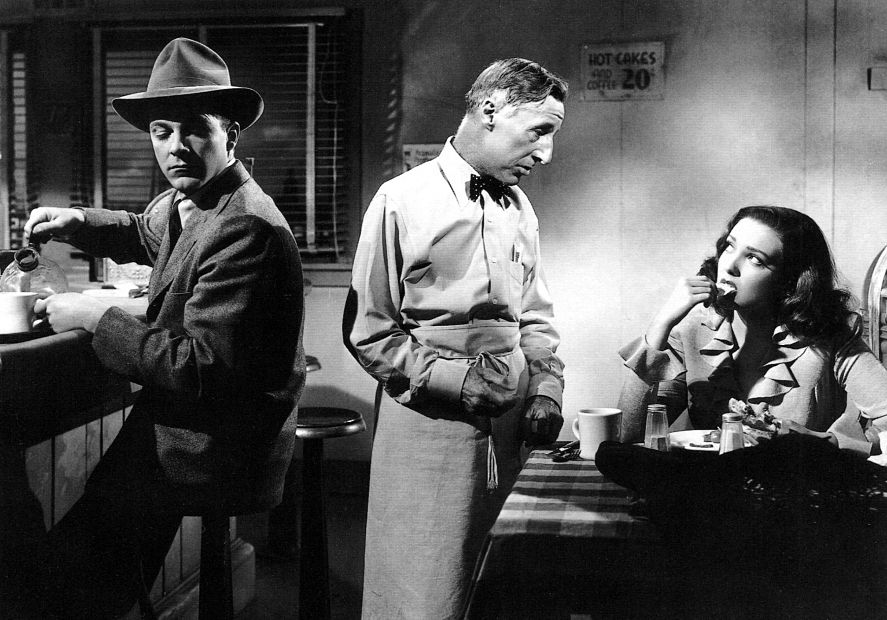
Andrews does a good job of playing a man who has lost his inner compass, taking refuge in cynicism or the short-term, superficial betterment of the grab-and-run thief. His tendency to flee his difficulties is amplified when he finds himself facing a murder rap. The moral blurriness, weakness, and ambivalence that Andrews could muster serve him well in noir. But Faye, whose warmth and appeal created a simpatico bond between Faye and audiences for years, falls conspicuously short; partly because she isn’t given enough shading and dimension by the script and, if she’s to be believed, butcher-block editing. The professionalism surrounding the principals is solid down the line. Anne Revere, who—with Judith Anderson and Agnes Moorehead—was one of Hollywood’s three queens of frosty severity, is a big plus as June’s dubious sister; and Bickford knows how to use silence as the hard-nosed cop sitting in the diner—watching, watching.
It isn’t just by forfeit that Fallen Angel becomes Darnell’s film. Her Stella is the only character who seems all of a piece. She could have been a cliché; just another trashy, tough-talking, small-town siren. But Darnell’s ability to project vulnerability from beneath her tough exterior lifts her beyond the usual stereotypical tropes; the ripeness of which so much was made wasn’t just physical with her. She persuades us that it included the heart, too, as she traversed the dark precincts of LaShelle’s evocation of the visual essence of noir. Partly because she initially lacked confidence, Darnell’s on-set behaviour during most of her career was described by co-workers as polite and even sweet. She was to make, in addition to Fallen Angel, three other films with Preminger: Centennial Summer (1946), in which she vied with Jeanne Crain for the favours of Cornel Wilde to a Jerome Kern score; Forever Amber (1947), for which she dyed her hair blonde as the heroine of Kathleen Winsor’s then-scandalous costume novel; and The 13th Letter, which moved Henri-Georges Clouzot’s poison-pen-letter classic Le Corbeau (1943) to Canada. By the time of her last film with him, she loathed the dictatorial Preminger as much as so many others did. But her films with him are as strong a grouping as any in her oeuvre, which was cut sadly short when, in 1965, she died in a house fire at the age of 41. Although now largely forgotten, Fallen Angel stands high among Darnell’s devotees. In a burst of wishful thinking, the film’s ad campaign trumpeted: “The creator of Laura does it again!” He didn’t. Its choppy script and ham-handled editing do the film in. While there’s lots of satisfying professionalism on display in Fallen Angel, the film itself comes up conspicuously short. Musically, “Slowly” was no “Laura”. Faye, after recording it, was shocked to discover that her version wasn’t used. Instead, the song was sung in the film by Dick Haymes. Further distressed by the way Zanuck and Preminger had cut her scenes and played up Darnell’s, Faye stormed out of the studio and didn’t make another film for 16 years. On her way out, Faye was to write, she left Zanuck a note which she described as unprintable. Faye learned the hard way how the Hollywood power game works. As it turned out, the real noir elements in Fallen Angel were to be found behind the camera, not in front of it.
Sources: AFI Catalogue of Feature Films; Hollywood Beauty: Linda Darnell and the American Dream by Ronald L. Davis, University of Oklahoma Press, 1991; Alice Faye: A Life Beyond the Silver Screen by Jane Lena Elder, University Press of Mississippi, 2002; Otto Preminger: The Man Who Would Be King, by Foster Hirsch, Knopf, 2007.
Notes by Peter Poles

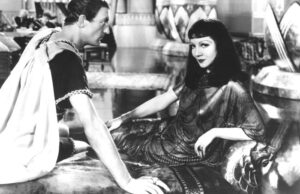
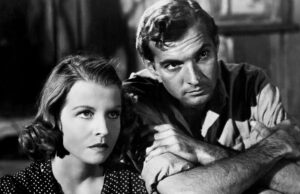
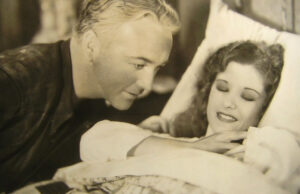






Leave a Reply